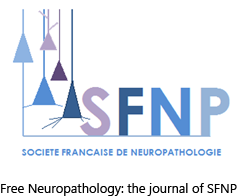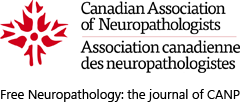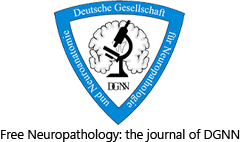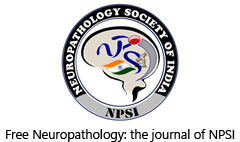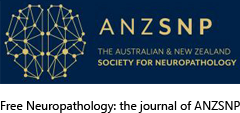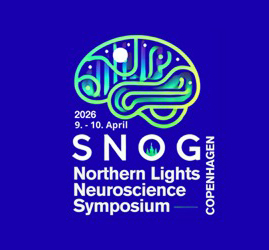Molecular clarification of brainstem astroblastoma with EWSR1-BEND2 fusion in a 38-year-old man
DOI:
https://doi.org/10.17879/freeneuropathology-2021-3334Keywords:
Astroblastoma, Brainstem, Fusion, Methylation, Neoplasms, Neuro-oncologyAbstract
The majority of astroblastoma occur in a cerebral location in children and young adults. Here we describe the unusual case of a 38-year-old man found to have a rapidly growing cystic enhancing circumscribed brainstem tumor with high grade histopathology classified as astroblastoma, MN1-altered by methylome profiling. He was treated with chemoradiation and temozolomide followed by adjuvant temozolomide without progression to date over one year from treatment initiation. Astroblastoma most frequently contain a MN1-BEND2 fusion, while in this case a rare EWSR1-BEND2 fusion was identified. Only a few such fusions have been reported, mostly in the brainstem and spinal cord, and they suggest that BEND2, rather than MN1, may have a more critical functional role, at least in these regions. This unusual clinical scenario exemplifies the utility of methylome profiling and assessment of gene fusions in tumors of the central nervous system.
Metrics
Published
How to Cite
Issue
Section
License
Papers are published open access under the Creative Commons BY 4.0 license. This license lets others distribute, remix, adapt, and build upon your work, even commercially, as long as they credit you for the original creation. Data included in the article are made available under the CC0 1.0 Public Domain Dedication waiver, unless otherwise stated, meaning that all copyrights are waived.








